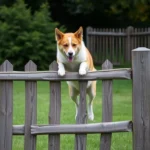
The Cane Corso is a majestic breed known for its powerful physique and loyal temperament. With a strong protective instinct and a gentle nature towards their families, Cane Corsos can be remarkable companions. However, if you already have dogs at home, you may wonder: will Cane Corso be good with my other dogs? Understanding the dynamics of introducing a Cane Corso into a multi-dog household is vital for ensuring a harmonious living environment.
Understanding the Cane Corso
Breed Characteristics
Cane Corsos are large dogs, typically weighing between 88 to 120 pounds, with a muscular build. Their short coat comes in various colors, including black, fawn, and brindle. The breed is known for its striking appearance, including a broad head and strong jaws.
In terms of temperament, Cane Corsos are intelligent, loyal, and protective. They are naturally devoted to their families and can be aloof with strangers. Their energy levels are moderate to high, requiring regular exercise and mental stimulation to stay content and healthy.
Historical Background
The Cane Corso originates from Italy, where it was traditionally used for guarding estates, hunting large game, and herding livestock. This background contributes to their protective nature and strong instincts, making them excellent guardians but potentially challenging in social situations.
Assessing Your Current Dogs
Temperament of Existing Dogs
Before bringing a Cane Corso into your home, it’s essential to evaluate the temperament of your current dogs. Dogs can exhibit various temperamental traits, such as dominant, submissive, or neutral behaviors. Understanding your dogs’ personalities can help forecast how they might interact with a Cane Corso.
Breed Characteristics of Current Dogs
Different breeds have varying tendencies toward aggression or friendliness. For instance, more sociable breeds like Labrador Retrievers may adapt well to a Cane Corso, while more territorial breeds might pose challenges. Considering the breed characteristics of your current dogs can provide insight into potential compatibility.
Socialization History
Socialization is crucial for all dogs, especially when introducing a new member to the household. Evaluating how well-socialized your current dogs are will help determine how they might respond to a Cane Corso. If they have had positive experiences with other dogs, they may adapt better to the new addition.
Cane Corso Temperament and Behavior
General Temperament
The Cane Corso breed is known for its protective instincts and loyalty. While they can form strong bonds with their family members, they can also exhibit aggression if not properly managed. Being aware of the potential for aggression is critical for ensuring a peaceful coexistence with other dogs.
Socialization Needs
Early socialization is vital for Cane Corsos. Introducing them to various environments, people, and other dogs can help them become well-adjusted adults. Socialization practices, such as puppy classes or supervised playdates with other dogs, can significantly influence their behavior towards existing pets.
Training and Obedience
Effective training methods are crucial for Cane Corsos, especially in a multi-dog household. Positive reinforcement techniques work well with this breed. Consistent obedience training not only helps the Cane Corso understand commands but also establishes the owner as the leader, which is essential for managing a group of dogs.
Tips for Introducing a Cane Corso to Other Dogs
Preparation Steps
Preparing for the introduction is the first step toward ensuring a successful transition. Assess your environment to ensure it is safe for all dogs involved. Additionally, ensure that all dogs are up to date on vaccinations, as this helps prevent the spread of diseases.
The Introduction Process
When introducing a Cane Corso to your other dogs, follow a step-by-step guide:
-
Neutral Territory: Begin in a neutral location, such as a park or a friend’s yard. This reduces the territorial instincts that may arise.
-
Controlled Meetings: Use leashes during the first meeting but keep them loose to avoid signaling tension. Allow the dogs to sniff each other while monitoring their body language.
-
Gradual Approach: If the initial meeting goes well, gradually allow more freedom for the dogs to interact. Supervise closely to ensure positive behavior.
-
Short Sessions: Keep initial interactions short to avoid overwhelming any dog. Gradually increase the duration of their time together.
Monitoring Interactions
During the introduction phase, closely monitor interactions. Look for signs of stress or aggression, such as growling, raised hackles, or stiff body posture. If you observe these signs, calmly intervene and redirect their attention to another activity.
Potential Challenges
Aggression Issues
Common triggers for aggression in Cane Corsos can include fear, territorial behavior, or frustration. Understanding these triggers is essential for managing aggressive behavior. If aggression arises during introductions, remain calm and assertive, redirecting the dogs’ focus away from each other.
Resource Guarding
Resource guarding is when a dog protects food, toys, or space. Cane Corsos can exhibit this behavior, especially when stressed. To minimize resource guarding issues, feed dogs separately and provide ample toys to reduce competition. Training sessions that involve sharing treats can help alleviate tension around resources.
Jealousy and Attention-Seeking Behaviors
Cane Corsos can display jealousy, especially if they feel they are not receiving enough attention. Recognizing signs of jealousy—such as pushing other dogs away or barking excessively—can help you manage these behaviors. Ensuring that all dogs receive equal attention and affection is vital for preventing jealousy.
Long-Term Compatibility Considerations
Ongoing Socialization and Training
Promoting long-term compatibility involves continued socialization and training. Regularly engaging your Cane Corso and existing dogs in social activities can strengthen their relationships. Group training sessions can also enhance obedience and foster teamwork among your pets.
Creating a Balanced Environment
Establishing routines is crucial for ensuring that all dogs feel secure within the household. Create a structured environment where each dog has its own space, toys, and food. Consistent schedules for feeding, walks, and playtimes help reduce anxiety and promote harmony.
Regular Health and Behavior Check-Ups
Regular veterinary visits are essential for monitoring the health of your dogs. Behavior assessments during these check-ups can help identify any changes in temperament that may need addressing. Keeping an eye on your dogs’ health and behavior over time ensures you can intervene early if issues arise.
Conclusion
Bringing a Cane Corso into a home with other dogs can be a rewarding experience if approached thoughtfully. By understanding the breed’s characteristics, assessing your existing dogs, and implementing effective introduction techniques, you can foster a harmonious environment. Remember, patience and consistency are vital components in ensuring that a Cane Corso will be good with my other dogs. Take the time to assess compatibility, train appropriately, and create a loving, structured environment for all your furry friends.









